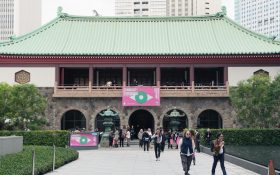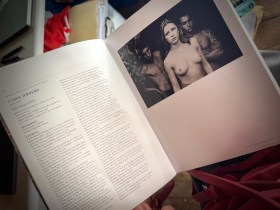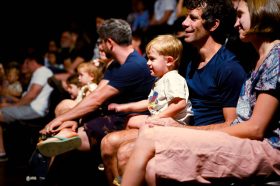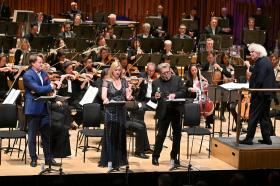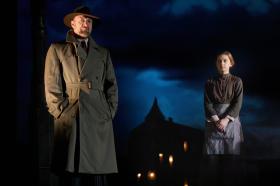Pittsburgh, Pennsylvania, was founded in the eighteenth century at the place where the Allegheny and Monongahela Rivers converge to form the Ohio. An industrial and manufacturing giant for many decades thereafter, the city was home to some of the largest steel tycoons of the late nineteenth and earl twentieth centuries. One of these men, Andrew Carnegie, left the city a legendary bequest that ensured its continued cultural prosperity far beyond his death. But few people know that while building the many museums and cultural centers bearing his name, Mr. Carnegie did not, as many philanthropists did, acquire any original works of art — he didn’t see the point. Recreations, to his mind, were just as good for the people of Pittsburgh. Ironically, since Carnegie’s day, the city is responsible for producing such original talents as Stephen Foster, Andy Warhol, August Wilson, and Barbara Cook.
Following the early years of the twentieth century, it was the vitality of the city’s many cultural institutions that helped to transition Pittsburgh from the Steel City of pollution so thick you could barely see in front of you to a downtown that is considered one of the great examples of cultural revitalization.
While downtown Pittsburgh still closes up shop rather quickly after business hours, the section known as Theater Square continues to hum long after the curtains come down at Pittsburgh’s many downtown theaters. Designed by Michael Graves, Theater Square “has become the centerpiece of the Cultural District,” according to the web site of the Pittsburgh Cultural Trust.
Comprising this truly exhilarating section of the city — where steel sculptures spring from the ground and lights flicker as though in communication with New York’s Times Square — are several bastions of the Pittsburgh cultural scene. The Benedum Center, the Byham Theater, the Harris Theater, the O’Reilly Theater, The Cabaret at Theater Square, Backstage Bar, Wood Street Galleries — and many more. While listing all of them would prove monotonous, the sheer volume of artistic and cultural venues serves to prove the increasing vitality of the city’s 14-square block cultural district.
And the reconstruction continues. In October 2005, “several buildings on a Downtown block cornered by Liberty Avenue and 10th Street were cleared to make way for the new $35 million African American Cultural Center. Although the official groundbreaking isn’t expected until early next year, the much-anticipated 80,000-square-foot facility — which will boast 8,000 square feet of exhibition space, a 500-seat theater and lecture hall, a gift shop, cafe and rehearsal space — is expected to be completed in the fall of 2007.”
All of these sites are governed by The Pittsburgh Cultural Trust, which since 1984 has sought to transform the downtown area from a “red light district with only two cultural facilities — Heinz Hall and the Convention Center — to a vibrant animated area with over fourteen cultural facilities, public parks and plazas, and new and proposed commercial development.”
It’s no secret to regular readers of these articles that Pittsburgh theater was a training ground for me in my early days, and it continues to be as alive today as it was back then. In addition to the traditional theatre tours (Doubt, with Tony Award-winner Cherry Jones closed at the 3,000 seat Benedum Center on March 11), Pittsburgh is awash with several resident houses, including the city’s largest, resident professional theater, the Pittsburgh Public Theater, which from March 8, 2006 to April 8, 2006 will be presenting Yasmina Reza’s LifeX3. (And FYI: Marvin Hamlisch conducts the Pittsburgh Pops at Heinz Hall every season.)
But the city arts scene is definitely not restricted to its plethora of theaters. A number of museums are scattered throughout the city, including Carnegie Museum of Art, Carnegie Museum of Natural History, The Frick Art & Historical Center, The Mattress Factory Art Museum, and the Meadowcroft Museum of Rural Life.
My favorite, however, is on The North Side, which was once a tough neighborhood populated by Irish and Polish immigrants. Now, however, it is the proud home of the nation’s only museum dedicated to Andy Warhol. Now, before you wonder how over four floors of a museum dedicated to Brillo boxes and Campbell’s Soup paintings might be at all interesting, know that the museum shows how Warhol’s life of destitution on Pittsburgh’s North Side directly led to his much fabled drug exploits and art at The Factory in New York City and beyond. It is a stunning portrait of one man’s mottled life. (In one room, silver balloons constructed to look like pillow clouds float. Patrons lie on the floor throwing them about like children.)
There is so much more to tell. The Pittsburgh Ballet, the Pittsburgh Opera, The Civic Light Opera — to mention nothing of the many smaller artistic venues beyond downtown that would make an article unto themselves. (Make no mistake, the city is alive with scores of individual contemporary artists who create some of the most fantastic “glass, painting, mixed media, sculpture.” Thus, if ever you find yourself travelling across country, be sure to make a pit stop at The Gateway to the West to check out its flourishing arts scene.
